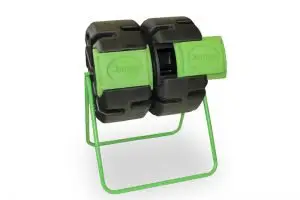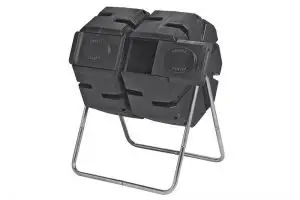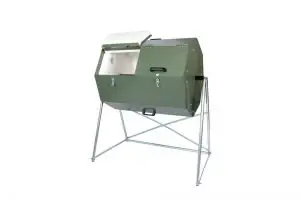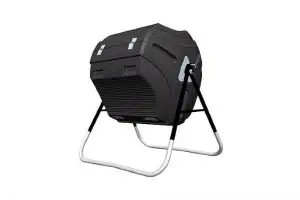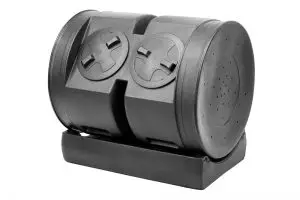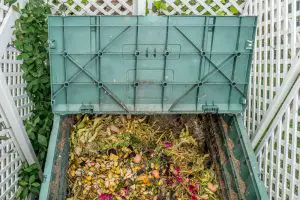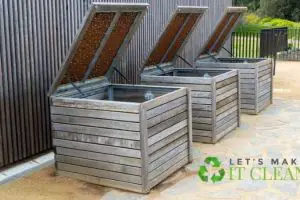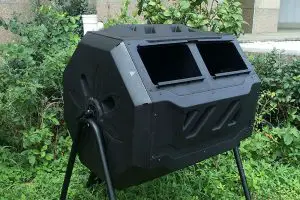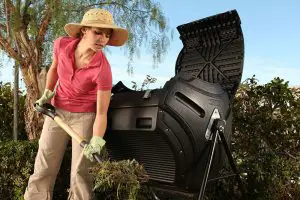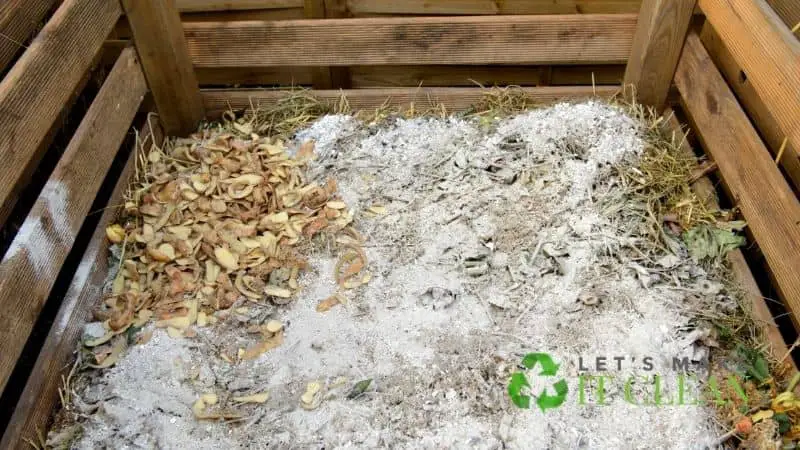These two modern composters have numerous advantages that sometimes overlap.
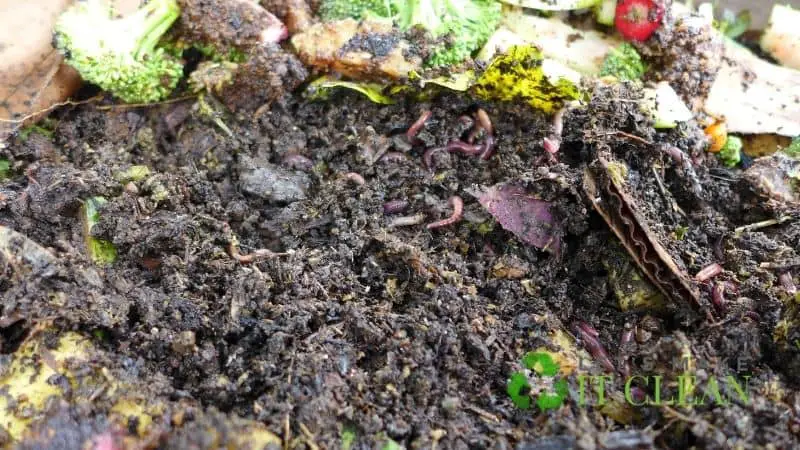
Choosing one over the other, therefore, becomes a great challenge. However, due to their functionality, a difference in their operating system exists.
Quick Navigation
The organic waste you have can be easily broken down using either a compost tumbler or a worm. In the process, you will eliminate potentially harmful matter converting it to eco-friendly material.
The soil, too, will benefit from this homemade fertilizer. So, when faced with compost tumbler vs. worm bin, how do you make a decision that serves you best?
Read through this article and find out which one is best for you.
How to Use a Compost Tumbler
Tumblers work by spinning and turning the organic waste in the device to form compost. Therefore, it would be best to regularly turn the ingredients in your tumbling composter to allow adequate mixing.
The essential element facilitating fast decomposition in a tumbler is heating. The ratio you use in adding the brown and green matter is crucial in regulating your compost heap’s nutrient level.
Similarly, your compost pile size is vital in making sure the bacterial activity in the tumbler generates enough heat.
You should also make sure you have enough air circulation in the tumbling composter for microbes to work optimally.
Composting tumblers also require constant moisture level control to ensure their contents are evenly composed and ready for use in the gardens.
Climate change affects your tumbler’s temperature. However, it is cardinal that you partially expose your tumbler to the sun if you want to balance moisture and heat levels.
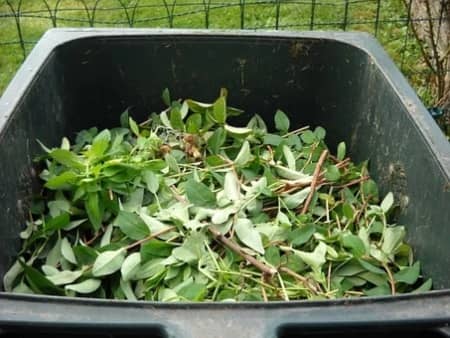
When using a tumbler composter, the dominant idea is adding one layer of kitchen waste at a time.
Whenever you want to add ingredients to your tumblers, gather all the waste to make a considerably good-sized heap.
Now add the materials into the tumblers and start the composting process. Do not at any time add fresh material without first removing the finished compost.
Types of Tumblers
Tumblers are designed in four forms. The four forms are created with unique abilities giving you finished compost that is beneficial to your soil. Below are the discussed in detail tumblers:
Center-axle Compost Tumbler
This type of tumbler is designed with a bar on its short axis passing through the tumbler’s middle. Whenever you add material for decomposition, you should spin the composter allowing the microbes to work on the content evenly.
For this reason, the tumblers have been manufactured with an end-over-end rotating system.
You can also easily load the tumbler with kitchen scraps, coffee grounds, yard waste, food waste, and all your garden waste.
Adding all this organic matter is made possible by the built-in doors for convenient loading of fresh material and removal of the finished compost heap.
Crank-operated Tumbler
This type of tumbler operates using the crank that extends over the huge drum on one end. Instead of turning your compost using a pitchfork or shovel that you would use in the compost bins, here the crank does all the hard work for you.
With the stability this compost tumbler has, you can get a large compost volume after loading heavy loads of organic matter for composting.
Base-rolling Tumblers
To use this tumbler, look for a base with wheels, then place it on the top. Turning this compost tumbler is also easy since you can use either your hands or legs.
Spherical Tumbling Composters
These tumblers spin on their bases. They are manufactured to resemble large plastic balls. Mixing the ingredients in the tumbler requires you to use your feet to spin the tumbler.
Why Use Compost Tumblers?
The result of using tumblers is a much faster composting process. Unlike using a compost bin or a worm bin, oxygenating compost in a tumbler is easy.
Since you use a tumbler that is elevated, the chances of rodents and other animals invading your composting space are minimal. You, therefore, don’t need to put traps all over the composting site.
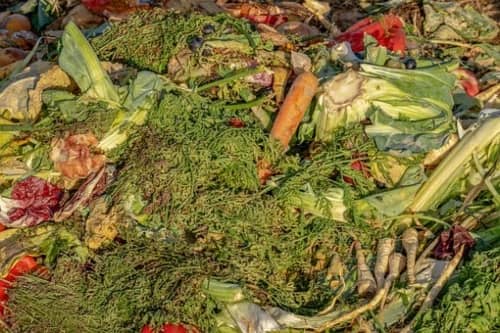
The large drums used in making these composters give you an opening to compost as much compost as you want. You, therefore, get an added advantage over using a compost bin or worm bin as they can process a large volume of ingredients.
The heat level that results from the activity of useful microorganisms in your tumblers kills disease-causing bacteria.
You will not have to buy chemicals to eliminate these dangerous microorganisms. This can kill weeds and disease-causing bacteria.
Another reason for using these tumblers is their improved functionality even in cold climates. Their design allows the microorganisms to continue working, consequently generating heat for continued decomposition.
Why NOT Use Compost Tumblers?
The first downside of this equipment is its cost. The tumblers are expensive to buy and maintain. That is why some people prefer to use a compost bin or a worm bin.
Also, in some cases, you will find that the device’s contents have excess moisture that slows down the process of composting.
Besides, when your tumbler is full, you will have a difficult time spinning it. You will even need to use your feet when the process becomes too tough.
Finally, if you’re using your tumbler indoors, you will need to give it more attention and constant turning, which can be tiring.
Using Worm Bins
If you have no problem interacting with red worms, using a worm bin is a great compost-making alternative.
Also, if you have a small space, you can use these bins without worrying about the bin taking up much of your space.
Additionally, if you are a city dweller, you can comfortably use a worm bin at your apartment’s convenience.
However, you must meet the required heat requirements by having the worm bin partially exposed to a heat source.
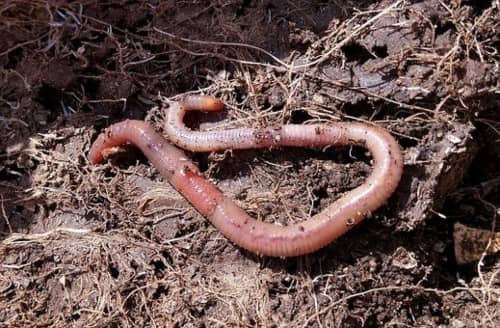
When making a worm farm for this composting system, it is paramount to have a paper shredder to help you shred paper.
You will then use the shredded paper as the garden beds for the worms. Alternatively, you can use leaves.
Once you have set up the worm composter, you will get worm castings after a few months.
Why Use Worm Bins?
Worm bins require a small space and are therefore efficient for farmers who live in urban settings.
Also, the worm bin composter does not demand as much labor as the compost tumbler.
Another important reason for using worm bins is the level of nitrogen preservation. Worm bins are created to maintain cool temperatures that are vital in nitrogen preservation for efficient decomposition.
Adding new material even over an already existing layer in the worm bin is allowed. You don’t have to wait until the composting process is complete to add more waste.
Difference Between Tumblers and Worm Bins
Living Conditions Comparison
If you have a little outdoor space, you can decide to use a compost tumbler.
However, if the living conditions don’t favor outdoor use, a worm bin is an indoor-friendly option to explore in getting compost that has a high quality.
Microorganisms Involved
Tumblers use microbes to make compost. On the other hand, worm bin composting requires worm farms that have both worms and microbes.
Loading and Unloading
The design of compost tumblers makes unloading favorable due to the inbuilt doors. When you compare it with unloading a worm bin, you realize that worm bins are more tricky to unload.
Load Capacity
Naturally, compost tumblers are bigger than worm bins and consequently carry a bigger load. The result is getting bigger compost loads from tumblers vs. the smaller load from worm bins.
Conclusion
When faced with the compost bin versus worm bin dilemma, using the above tips will help you make an informed decision. Consider the amount of waste you have, including vegetable waste.
You should also have in mind the amount of compost you want before deciding which system to use.

